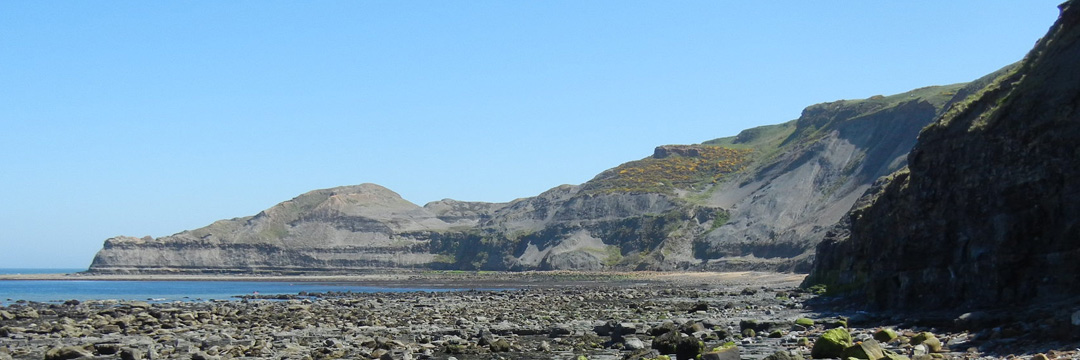Kettleness, Yorkshire, UK
The coast of north Yorkshire surrounding the town of Whitby is a mecca for Jurassic marine fossils.
Virtually any section of the coast from Staithes to Ravenscar will offer up a bounty of ammonites and other wonderfully preserved fossils.
This website ---> The UK Fossils Network contains a wealth of information on each of the access points along the coast.
It would be pointless to duplicate the monumental effort that has gone into this guide to the UK.
I applaud them and thank them for the guidance they provided.

Kettleness is the next bay east (south) from Runswick Bay. The stairway access from above has been taken by the sea.
A rope climb has been installed but I only saw the winkle hunters using it.
At lower tide times, Kettleness is accessible from Runswick Bay, about a 30 minute hike with some scrambling over the boulders.
A few comments, though on the entire Yorkshire coast...
Item #1: Cliffs
Each of these localities is along steep, unstable and rapidly eroding cliffs.
It is NOT necessary to dig or otherwise search in the cliff faces.
Everything we found with one exception was in the rubble on the beach or scree at the base of the cliffs.
It is not just a cliche, it is the truth.
Item #2: Tides
The tides are your friend and foe.
If not for the action of the sea, the fossils would not be washed out of the cliffs onto the shore.
However, during high tides, the sea may cover the beaches and make access to the rockier areas dangerous and impassable.
Pay attention to the tides.
Item #3: Nodules
The better preserved ammonite fossils are contained in hard rounded nodules.
Train your eyes to look for the dull grey muddy looking grey nodules, usually spherical or ovate in shape.
They drop out of the cliffs and the sea tosses them about, wearing off the outer edges of matrix, exposing the ammonites within.
Observing the color and texture of the sea-worn nodules will provide a guidepost for finding fresher ones as
the freshest ones will not likely show any signs of what is within.
The harder, speckly grey nodules did seem to have much in them. They have a funny smell when you smack them with the hammer.
Rounding the corner to the east of Runswick Bay brings you to Kettleness.

Once you round the corner, the going gets easy as the platform is level and wide.

The platform at sea level is a veritable moonscape of massive nodules.

Similar sized ones are prominent in the cliff face about a meter above the sea level.
I don't know if they typically have anything in them. They were too beautiful to disturb.

This one looks like there was something in it. I left it alone.

A small waterfall at the west end of the beach.

The open sandy part of the beach at Kettleness is littered with rubble piles, each of which had numerous ammonite fragments
for the picking.

This nodule was lying open on the beach.
My thanks AGAIN to the The UK Fossils Network for their hot tips!
Questions? E-Mail me:
tngray@nautiloid.net
Other Sites







